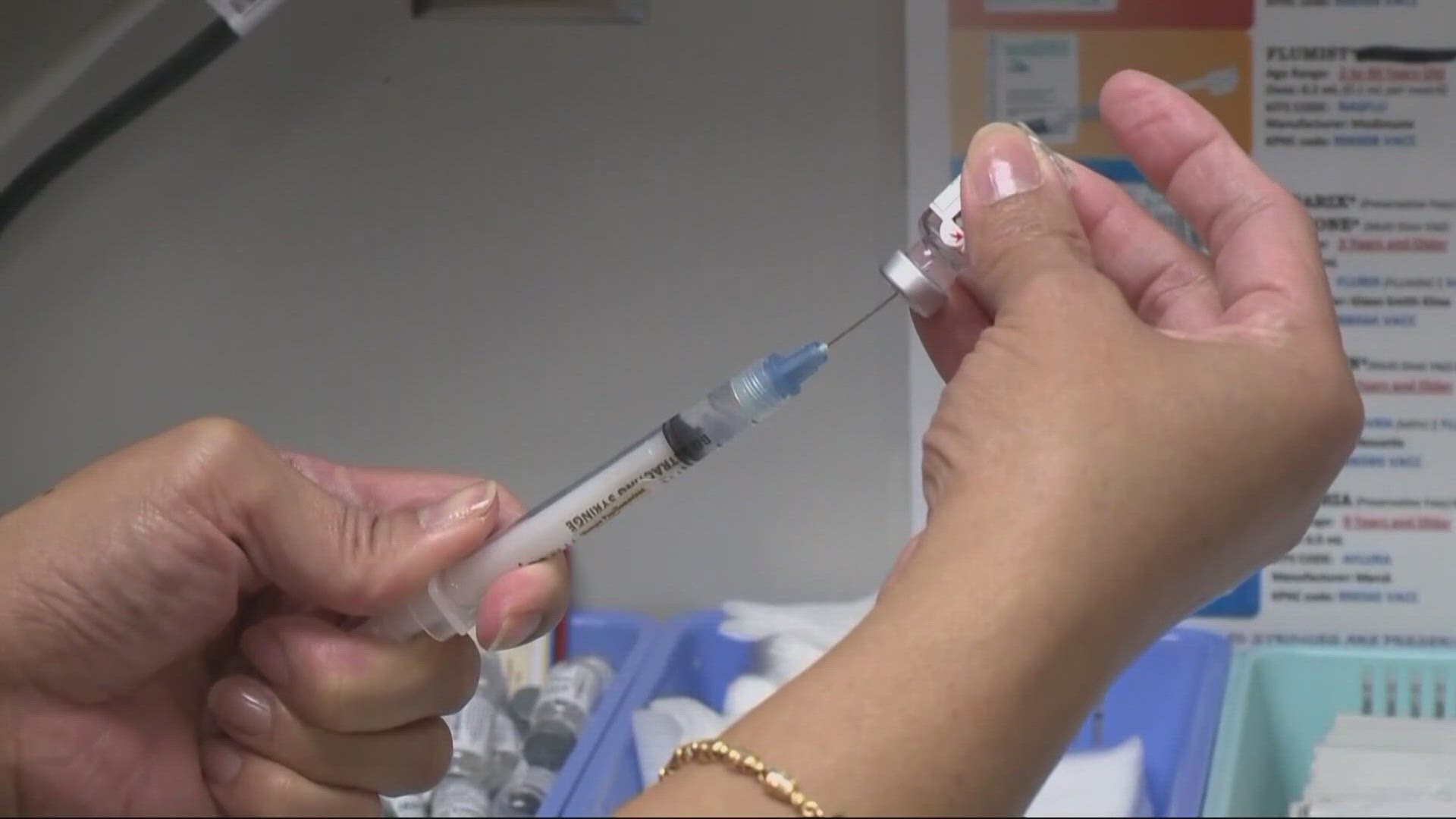PORTLAND, Ore. — The incoming omicron wave could peak with around 1,650 active COVID-19 hospitalizations in Oregon within a month, according to a new forecast from Oregon Health and Science University (OHSU) released Friday.
That's an increase from the 1,250 hospitalizations predicted last week, although still fewer than the 2,000 predicted in OHSU's initial omicron forecast two weeks ago. It also moves up the timeline; last week's forecast estimated the peak wouldn't arrive until February.
“People should take extreme caution, especially if they’re going to be around people at higher risk including older adults and those who are immunocompromised,” Dr. Peter Graven, director of the OHSU Office of Advanced Analytics, said in a statement. “I expect hospitalizations will start accelerating now and peak by the end of January.”
The initial estimate was reduced after emerging data showed that the omicron variant, although more contagious than prior versions of the virus, appeared to cause lower rates of severe illness, leading to fewer hospitalizations as a percentage of total cases.
But the latest forecast raises and accelerates the hospitalization peak based on the virus's rapid spread on the East Coast, OHSU said, plus new data from Europe showing higher infection rates among vaccinated people.
Oregon’s daily case numbers declined steadily through the fall months but began to rapidly rise again in the past two weeks.
The daily count on Thursday was 2,946, approaching the current record of 3,207 set in late August at the height of the delta wave, and Multnomah County Health Officer Dr. Jennifer Vines warned this week that the worst is still on the way.
The daily average for new cases in the United States rose to 355,990 on Thursday, according to CNN, up from 265,427 just two days earlier. Prior to this week the record was about 252,000, set in January 2021.
The higher case rate means that even a smaller percentage of severe illness could still lead to more active COVID hospitalizations than Oregon has ever seen before. The state's current hospitalization record is 1,187, set on Sept. 1 during the delta wave, and it threatened to overwhelm the system.
Public health officials have stressed that even though omicron carries a higher risk of infection for vaccinated people, the vaccines still substantially reduce the risk of severe illness and death, and booster doses provide even stronger protection.
Earlier this month, Gov. Kate Brown set a target of getting booster shots to 1 million Oregonians by the end of January.
The OHSU report also urged the public to wear masks in indoor public settings and avoid large gatherings in order to ease the strain on the hospital system in the next two months.
“Now is not the time to be resigned to getting COVID,” Graven said. “It will be especially important to protect those most vulnerable to severe illness over the next few weeks. If people wear facial coverings and avoid indoor gatherings, it could help to flatten the curve. That will help to ensure all Oregonians continue to have access to hospital care when they need it, whether it’s for COVID-19 or all of the other life-threatening conditions that demand care in a hospital.”



